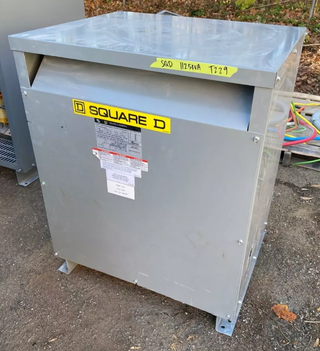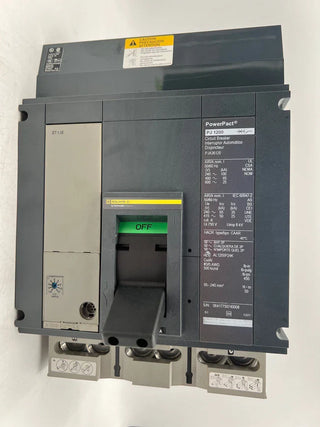When you plug in your coffee maker or switch on the lights, you’re relying on one part of your home’s wiring that most people never think about, the branch circuit. It’s the final link that delivers power safely from your breaker panel to the outlets and fixtures around your home or business.
Understanding what a branch circuit is and how it works helps you make smarter choices when maintaining or upgrading your electrical system, especially when dealing with breakers or wiring components.
What Is a Branch Circuit?
A branch circuit is the wiring that starts from the circuit breaker or fuse in your electrical panel and ends at the device or outlet that uses electricity.
It carries power from your main service panel to everyday loads like lights, outlets, and appliances.
Think of your electrical system as a tree:
-
The trunk is the service entrance from the utility.
-
The branches (feeders) carry power to various panels or areas.
-
The twigs, or branch circuits, deliver electricity directly to your devices.
Each branch circuit has three leading conductors:
-
Hot wire (live) – carries current from the breaker to the load.
-
Neutral wire – returns current back to the panel.
-
Ground wire – provides a safe path during faults.
A branch circuit begins at the circuit breaker and ends where the power is used, for example, at a wall outlet, light fixture, or motor.
Types of Branch Circuits
Not all branch circuits serve the same purpose. The National Electrical Code (NEC) defines different types of electrical devices based on what they power. Here are the most common:
1. General-Purpose Branch Circuits
These are the everyday circuits that power lights, small appliances, and outlets in living spaces. They’re typically 15-amp or 20-amp circuits, common in bedrooms, living rooms, and hallways.
2. Appliance Branch Circuits
Large electrical appliances such as refrigerators, washing machines, and dishwashers often need dedicated circuits. These circuits prevent overloads and ensure steady power for high-demand equipment.
3. Individual Branch Circuits
These are designed for one specific appliance or load. Examples include an electric dryer, water heater, or oven. Each has its own breaker and wiring sized for that appliance’s power needs.
4. Multiwire Branch Circuits
A multiwire circuit uses two or more hot wires that share a single neutral wire. It’s efficient but requires a double-pole breaker so both hot wires disconnect together. This setup is often found in kitchens or workshops.
Branch Circuit vs. Feeder
People often confuse branch circuits and feeders. The difference is simple:
-
A feeder carries power from the main panel to a sub-panel or another distribution point.
-
A branch circuit starts at the final overcurrent device (like a breaker) and goes straight to the load.
In short, feeders distribute power, while branch circuits deliver it directly to where it’s used.
Code and Safety Standards (US)
Branch circuits must meet National Electrical Code (NEC) requirements for conductor size, breaker rating, and load capacity.
The NEC’s Article 210 covers the general rules, including:
-
Maximum loads per circuit
-
Required circuits in kitchens, bathrooms, and laundry rooms
-
GFCI and AFCI protection rules
-
Wire gauge and breaker pairing (e.g., 14 AWG for 15 A, 12 AWG for 20 A)
These standards help prevent overheating, short circuits, and electrical fires. Always follow local building codes and have licensed electricians handle major installations.
How to Size a Branch Circuit
Choosing the correct circuit size ensures both safety and performance. Here’s the basic process electricians use:
1. Calculate the load
Add up the total wattage of all devices on the circuit.
Example: five 60-watt bulbs + two 100-watt lamps = 500 watts.
2. Convert to amps
Divide the total watts by the circuit voltage (usually 120 V).
→ 500 W ÷ 120 V = 4.17 A
3. Select the correct breaker and wire gauge.
Circuits should not exceed 80% of their rated load.
For a 15 A circuit, keep the continuous load at or below 12 A.
Use 14 AWG wire for 15 A or 12 AWG for 20 A.
4. Consider distance and voltage drop.
Long runs can cause a voltage drop. In those cases, use a thicker wire to keep the power stable.
Proper sizing protects both your wiring and connected equipment.
Common Mistakes and Safety Issues
Even minor errors in wiring or load management can lead to serious hazards. Watch for these common issues:
-
Overloading a circuit by plugging in too many devices.
-
Using undersized wire can cause it to overheat.
-
Mixing neutral and ground wires improperly.
-
Neglecting GFCI or AFCI protection, especially in wet or sleeping areas.
-
Failing to label breakers clearly.
Routine inspection and maintenance help catch these problems early.
Real-World Examples
-
Lighting Circuit: A 15 A branch circuit powers ceiling lights and outlets in a bedroom.
-
Kitchen Circuit: A 20 A circuit serves countertop outlets for small appliances.
-
Appliance Circuit: A 30 A circuit feeds an electric dryer with a dedicated line.
-
Workshop Circuit: A multiwire branch circuit supplies two 120 V receptacles sharing one neutral.
These examples show how each branch circuit type has its own purpose in an electrical system.
Why Branch Circuits Matter
Branch circuits are the backbone of any electrical system. Without them, power couldn’t reach your devices safely or efficiently.
They also protect your equipment by isolating issues; if one circuit trips, the others keep working.
In homes, offices, or industrial facilities, reliable branch circuits mean fewer outages and better energy distribution.
Key Takeaways
-
A branch circuit runs from the breaker or fuse to the outlets or loads.
-
It’s the final stage in power delivery, the “backbone” of your electrical system.
-
Circuits must follow NEC rules for breaker size, wire gauge, and protection.
-
Proper design prevents overloads and electrical hazards.
-
Understanding your circuits helps you choose the right breakers and wiring.
Frequently Asked Questions About What is a Branch Circuit
What is a branch circuit?
It’s the set of wires that carry power from your breaker panel to the outlets, fixtures, or appliances in your home.
How is a branch circuit different from a feeder?
A feeder connects the main panel to sub-panels, while a branch circuit runs from the breaker to the end-use devices.
How many amps can a branch circuit handle?
Most household circuits are 15 A or 20 A. Larger appliances may use 30 A or 50 A circuits depending on their power draw.
Can you put several devices on one branch circuit?
Yes, as long as the total load doesn’t exceed the breaker’s rating and it meets local code requirements.
What is a multiwire branch circuit?
It has two hot wires and one shared neutral, used for split-load or 240 V circuits. It must use a double-pole breaker for safety.
What protects a branch circuit?
An overcurrent device, usually a circuit breaker or fuse, protects against short circuits and overloads.
Conclusion
Every switch, outlet, and light you use depends on a properly designed branch circuit. It’s the final step in your electrical system that keeps power flowing safely where you need it most.
Whether you’re upgrading a panel, adding circuits, or replacing old breakers, understanding branch circuits ensures your setup is both efficient and safe.
Need quality surplus electrical equipment for your next project?
Explore Brilliant’s wide selection of circuit breakers, panelsboards, disconnects, and more. Save money and get the reliability your system deserves.


